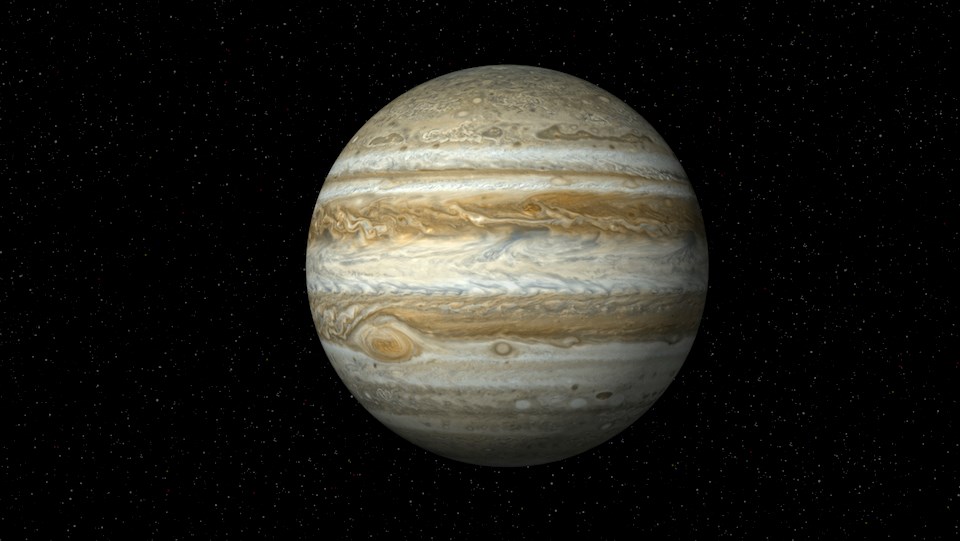Sky-watchers have a "once-in-a-lifetime" opportunity to view the largest planet in our solar system tonight (Sept. 26).
Jupiter is currently in direct opposition to the sun from our perspective, which means Earth is directly between the two celestial bodies. As a result, it will appear significantly brighter.
But it isn't the massive planet's location that makes the event so extraordinary.
Marley Leacock, an astronomer at the H.R. MacMillan Space Centre, tells Vancouver Is Awesome that the event is significant because two things are happening at the same time to allow the planet to look unusually bright. What's more, it's the first time in a whopping 59 years that these two things will occur at the same time; the last time it happened was in October 1963.
These two events also won't take place concurrently for another 107 years in 2129.
Jupiter's present position is one of the two factors that will make this current display so bright. "When the sun sets in the West, Jupiter will rise directly opposite in the East," Leacock explains, adding that this event takes place about every 13 months "and happens anywhere in the orbits of the two planets — we are just between the planet and the sun."
The second factor is that Jupiter is approaching perigee, meaning the planet and Earth are the closest to each other in their orbits.
"Perigee happens about once every 12 months, and the distance between the planets will change due to them being on two different orbits," she says.
For this perigee, however, the two planets are in the ideal position to get the smallest distance.
The orbits of the two celestial bodies make this event particularly special, adds Leacock.
"If Jupiter and Earth were on perfectly circular orbits, opposition would also be the time when perigee would occur. But the orbits are elliptical, causing the timing and distance of perigee to change."
Vancouver viewing tips for Jupiter close to Earth in 2022
Due to opposition, Jupiter is in the sky from sunset to sunrise. It will reach its highest point in the sky at about 1 a.m. on Tuesday (Sept. 27) and will appear as a very bright star in the sky.
"Luckily, it is very bright and easy to spot even in a light-polluted city," Leacock describes. "I always say to try to get somewhere dark anyways, just to see the stars that appear.
"An ideal location would be somewhere with high elevation with a clear view of the horizon, especially if you want to see the rise and set."
Vancouverites hoping to see details on the planet will either need a telescope or binoculars "with at least a 50 mm aperture and seven times to 15 times magnification," she adds.
These tools should allow stargazers to view some of the Galilean moons. A telescope is the best bet, however, as most with a 60 mm to 90 mm aperture will provide a view of the cloud belts and the Galilean moons.
Folks who miss the big event tonight or simply want another opportunity to view Jupiter will have other chances, albeit less spectacular ones.
The massive planet will start to be in the sky for shorter periods of time, before disappearing at the end of March 2023. It reappears a few hours before sunrise in late May. It'll then start to rise earlier and earlier, culminating in it being visible all night in November 2023.



